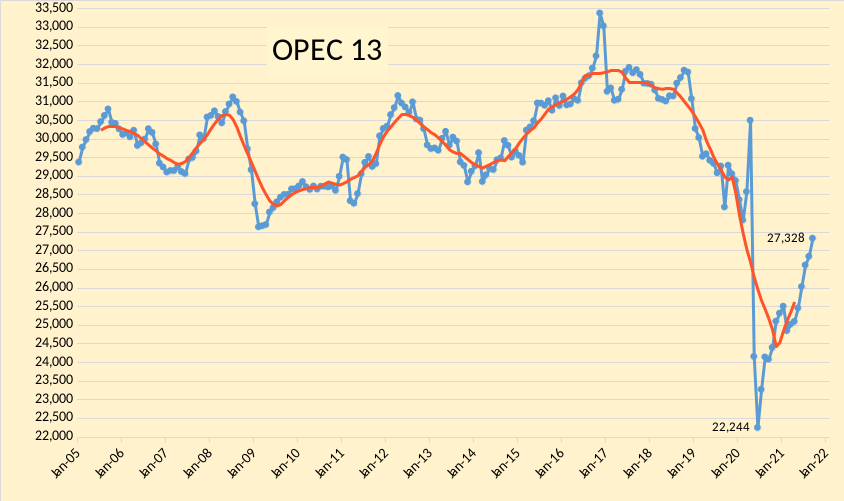Comments not related to oil or natural gas production in this thread please. Thanks.
Category: Uncategorized
OPEC Update, October 2021
The OPEC Monthly Oil Market Report for October 2021 was published this past week. The last month reported in each of the charts that follow is September 2021 and output reported for OPEC nations is crude oil output in thousands of barrels per day (kb/d). In the charts that follow the blue line is monthly output and the red line is the centered twelve month average (CTMA) output.

Open Thread Non-Petroleum, October 16, 2021
Comments not related to oil or natural gas production in this thread please. Thanks.
Open thread Non-Petroleum
Comments not related to oil or natural gas production in this thread please. Thank you.
Read MoreOpen Thread Non-Petroleum, October 1
Comments not related to oil or natural gas production in this thread please. Thank you.
Read More